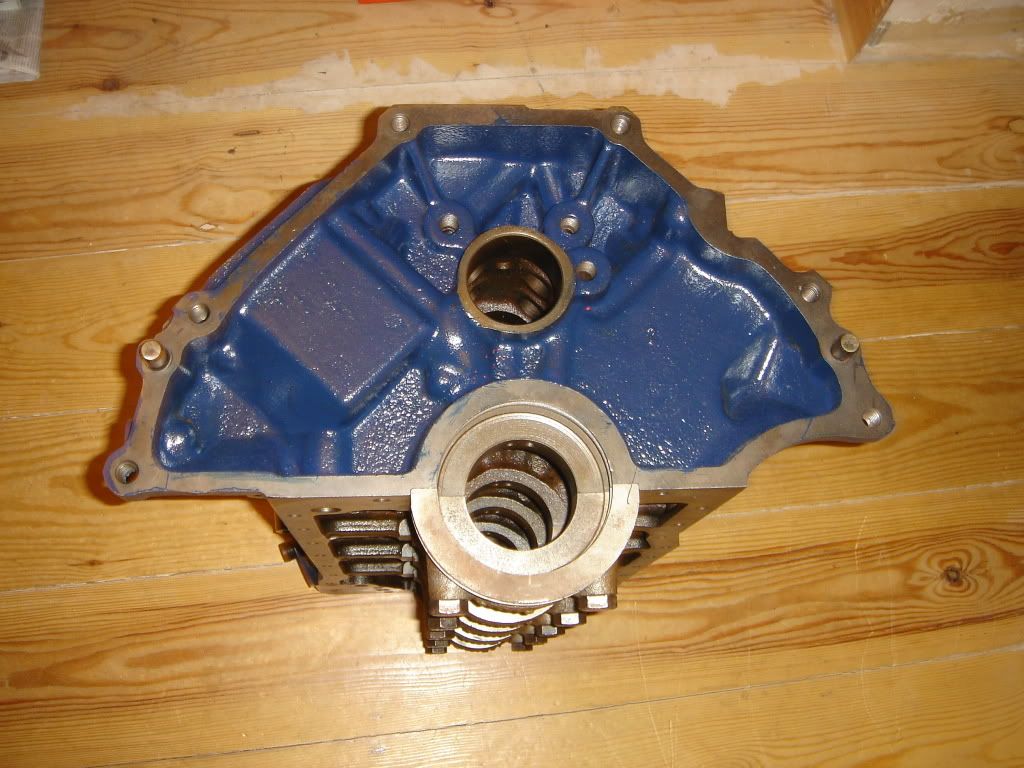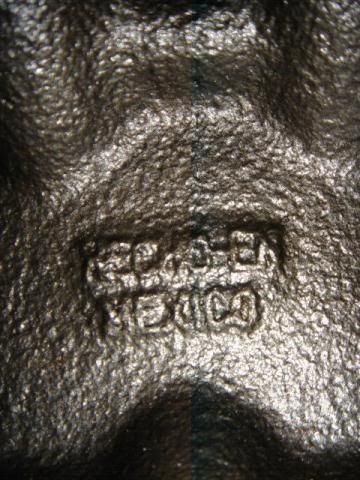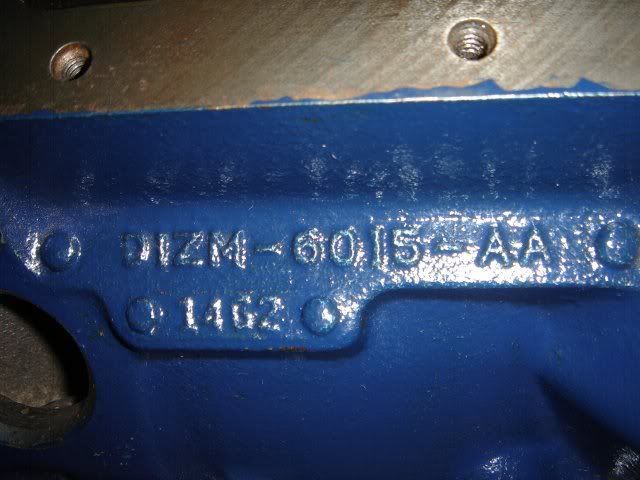docwatson
Member
- Joined
- Aug 6, 2014
- Messages
- 18
- Reaction score
- 3
Just got hold of one of these.....

Sold by Machine Mart
Brand Clarke CMD300 3-axis mill
Was originally looking for a decent TIG welder and walked out the shop with the mill and a few other goodies. Smuggled the pallet (they delivered a pallet!! with all the tools I had acquired to the back door) into the shed and ripped open the box.
Removed the plywood base and did a squat thrust and hauled the beast onto my tiny workspace (the shed is about the length of a car and 2 foot wider... with 2 cars in it!!! ... just don't ask....)
Mill was covered in a clear plastic bag which was removed. Wow... whats this red stuff........ (I can see you all smiling at the noob)..... So started cleaning the table, WD40 and blue towels.... 4 hours later I had removed the X and Y axis and was cleaning everything.
Over the next few evenings I read all I could on these machines and the best threads were here which is why I joined so a shopping trip got me some grease, copper grease, engine oil, oil pump can and metal polish.
The backlash on the Y axis initially was about 1/2 turn of the dial so I decided to lap it.
This is what I did...
1 ) At this point the mill had the whole table removed showing the base. The column, motor etc is still in position with the Z-lock and Z-axis jib screw locked.
2 ) Cleaned the edges of the V's in the base with a stone to remove burrs and cleaned it
3 ) Then cleaned it again.
4 ) Y axis saddle (is it a saddle?) was also cleaned.
5 ) A small amount of polish was smeared across the base where the Y-saddle will contact it on the flat and angled surfaces.
6 ) Inserted jib strip adjusting screws with copper grease and slid in jib strip.
7 ) finger tightened jib adjusters, have to be careful here as the jib needs to be located by its indents. I tightened the middle then the 2 outers.
8 ) Press on the Y-saddle in the opposite direction to the axis of the jib adjusting screws. This ensures the saddle is seated correctly, and slowly jog the saddle forwards and back about 1 cm while looking at the jib strip, if the jib strip starts sliding out, stop and repeat step 7.
9 ) If the jib strip moves with the saddle (it stays in place!) the adjusters are finger tightened and locked. When locking be very careful not to let the screw rotate as this can lock the saddle very easily. Check movement after locking each adjuster.
10 ) With the jib secured check that there is no movement when grabbing the Y saddle and trying to push one side and pull the other, I initially had a small movement which required another 2 attempts at jib adjusting before I was happy.
11 ) Finally....I moved the saddle SLOWLY up the full length of travel noting any change in resistance, if anything it felt slightly slacker towards the column.
12 ) Moved the saddle up and down its travel 20 times and stopped to check side movement, effectively polishing the mating surfaces. Found a tiny amount of movement and so adjusted the jib strips. Note that the adjustments to the jib were very small increases (I would guess less than 5 degrees rotation of the adjuster).
13 ) After adjusting the jib and checking slowly the movement again another 40 'laps'.
14 ) Move the saddle toward you so that about 1 cm of the jib is showing.
15 ) Slacken off the jib adjusters
16 ) If you can hold the jib in place and slide out the saddle.
17 ) You will see where the polish has done its job, now clean everything....and clean it again.
18 ) I repeated this lapping (steps 1-17) 2 more times
This produces about 25% polished surface on the base and saddle, do not lap any more than this or oil will not be retained in the slideways.
Then reassembled the Y-axis taking care to really clean the leadscrew and nut. Coated the whole length of the leadscrew with coper grease and also the sides of the captive nut. positioned the nut and wound the leadscrew through. I greased the ways and assembled the saddle with the jib screw (amazing how quick you get when you have done it about 15 times already).
I then attached the end plate and wheel. I found that the leadscrew nut was best 'secured' when it was closest to the end plate and had about 1/4 turn backlash.
I then slowly tightened the wheel nut, locked it (as with the jib adjusters don't let the inner nut move when locking it with the other nut) and moved the saddle up and down checking for any rocking movement of the saddle and force required to turn the handle which was quite small. As I experimented with tightening the wheel nut I noticed the backlash reducing so took it to a point where I had zero backlash. I used a DTI to check and I did get ZERO backlash. The force required to turn the wheel had increased but was not excessive.
Then did the same with the X-axis......
At this point in time I have removed the column and am about to start the lapping process on the Z-axis.
Do you want photos of the process? It really has made a HUGE difference to the feel of the slides.
The first mod will be this.....

...to bury the hatchet on the column flex....now what if I filled this with epoxy crete....
...then a belt drive and probably CNC.
I might even start making chips.....:hDe:
Andy

Sold by Machine Mart
Brand Clarke CMD300 3-axis mill
Was originally looking for a decent TIG welder and walked out the shop with the mill and a few other goodies. Smuggled the pallet (they delivered a pallet!! with all the tools I had acquired to the back door) into the shed and ripped open the box.
Removed the plywood base and did a squat thrust and hauled the beast onto my tiny workspace (the shed is about the length of a car and 2 foot wider... with 2 cars in it!!! ... just don't ask....)
Mill was covered in a clear plastic bag which was removed. Wow... whats this red stuff........ (I can see you all smiling at the noob)..... So started cleaning the table, WD40 and blue towels.... 4 hours later I had removed the X and Y axis and was cleaning everything.
Over the next few evenings I read all I could on these machines and the best threads were here which is why I joined so a shopping trip got me some grease, copper grease, engine oil, oil pump can and metal polish.
The backlash on the Y axis initially was about 1/2 turn of the dial so I decided to lap it.
This is what I did...
1 ) At this point the mill had the whole table removed showing the base. The column, motor etc is still in position with the Z-lock and Z-axis jib screw locked.
2 ) Cleaned the edges of the V's in the base with a stone to remove burrs and cleaned it
3 ) Then cleaned it again.
4 ) Y axis saddle (is it a saddle?) was also cleaned.
5 ) A small amount of polish was smeared across the base where the Y-saddle will contact it on the flat and angled surfaces.
6 ) Inserted jib strip adjusting screws with copper grease and slid in jib strip.
7 ) finger tightened jib adjusters, have to be careful here as the jib needs to be located by its indents. I tightened the middle then the 2 outers.
8 ) Press on the Y-saddle in the opposite direction to the axis of the jib adjusting screws. This ensures the saddle is seated correctly, and slowly jog the saddle forwards and back about 1 cm while looking at the jib strip, if the jib strip starts sliding out, stop and repeat step 7.
9 ) If the jib strip moves with the saddle (it stays in place!) the adjusters are finger tightened and locked. When locking be very careful not to let the screw rotate as this can lock the saddle very easily. Check movement after locking each adjuster.
10 ) With the jib secured check that there is no movement when grabbing the Y saddle and trying to push one side and pull the other, I initially had a small movement which required another 2 attempts at jib adjusting before I was happy.
11 ) Finally....I moved the saddle SLOWLY up the full length of travel noting any change in resistance, if anything it felt slightly slacker towards the column.
12 ) Moved the saddle up and down its travel 20 times and stopped to check side movement, effectively polishing the mating surfaces. Found a tiny amount of movement and so adjusted the jib strips. Note that the adjustments to the jib were very small increases (I would guess less than 5 degrees rotation of the adjuster).
13 ) After adjusting the jib and checking slowly the movement again another 40 'laps'.
14 ) Move the saddle toward you so that about 1 cm of the jib is showing.
15 ) Slacken off the jib adjusters
16 ) If you can hold the jib in place and slide out the saddle.
17 ) You will see where the polish has done its job, now clean everything....and clean it again.
18 ) I repeated this lapping (steps 1-17) 2 more times
This produces about 25% polished surface on the base and saddle, do not lap any more than this or oil will not be retained in the slideways.
Then reassembled the Y-axis taking care to really clean the leadscrew and nut. Coated the whole length of the leadscrew with coper grease and also the sides of the captive nut. positioned the nut and wound the leadscrew through. I greased the ways and assembled the saddle with the jib screw (amazing how quick you get when you have done it about 15 times already).
I then attached the end plate and wheel. I found that the leadscrew nut was best 'secured' when it was closest to the end plate and had about 1/4 turn backlash.
I then slowly tightened the wheel nut, locked it (as with the jib adjusters don't let the inner nut move when locking it with the other nut) and moved the saddle up and down checking for any rocking movement of the saddle and force required to turn the handle which was quite small. As I experimented with tightening the wheel nut I noticed the backlash reducing so took it to a point where I had zero backlash. I used a DTI to check and I did get ZERO backlash. The force required to turn the wheel had increased but was not excessive.
Then did the same with the X-axis......
At this point in time I have removed the column and am about to start the lapping process on the Z-axis.
Do you want photos of the process? It really has made a HUGE difference to the feel of the slides.
The first mod will be this.....

...to bury the hatchet on the column flex....now what if I filled this with epoxy crete....
...then a belt drive and probably CNC.
I might even start making chips.....:hDe:
Andy


































































































